The International Diffraction Data Center (ICDD) released the 2024 edition in September 2023PDF-2 databaseThe PDF database is currently the standard diffraction database internationally, and is the world'sCertified by ISOThe diffraction database. Each diffraction data has been reviewed, edited, edited, and standardized by internationally renowned editors in the field of X-ray, providing strong support for accurate phase identification. It is an indispensable and extremely important database for phase identification.
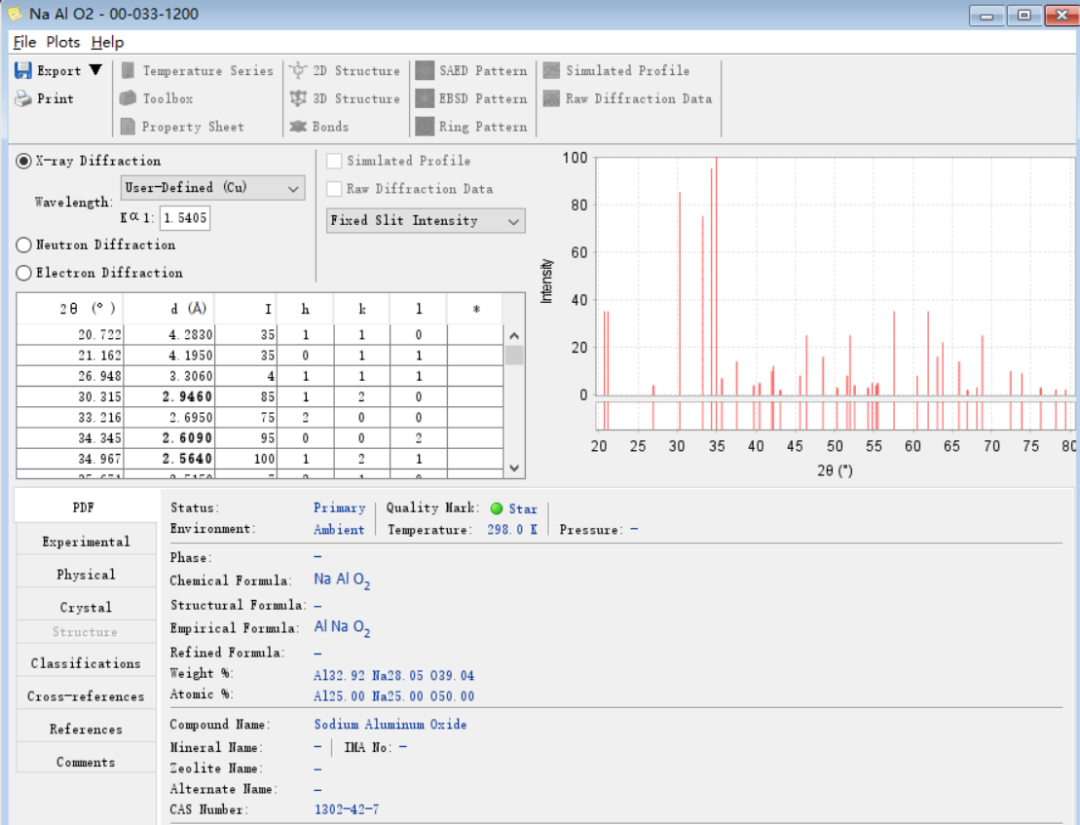
Overview of PDF-2 2024 Database:Quantitative analysis of phase identification
PDF-2 mainly focuses on the phase identification of inorganic materials, containing diffraction data of common organic materials, which facilitates rapid phase identification.
⊙ Specially designed for the correct identification of material phases;
⊙ 349700 sets of featured data
⊙ 244500 sets of data contain reference intensity I/Ic values for quantitative analysis of RIR;
⊙ Built in 73 functions for quick retrieval of PDF card conditions;
⊙ Each PDF card contains 57 types of information;
⊙ Provide matching phase retrieval software SIeve as a gift;
⊙ Copyright used for up to 5 years
Collaborative database
ICDD Powders (00) -International Centre for DiffractionData(International Diffraction Data Center)
ICSD (01) -Fachinformationszentrum Karlsruhe (FIZ)(International Crystal Structure Database)
NIST (03) -National Institute of Standards and Technology,(National Institute of Standards and Technology database in the United States)
ICDD Single Crystal Data (05) -InternationalCentre for Diffusion Data(International Diffraction Data Center - Single Crystal)
application area
The PDF-2 2024 version database includes standard diffraction cards of phases covering approximately 50 scientific research fields, such asBattery materials, thermoelectric materials, superconducting materials, metal materials, ceramic materials, mineral materials, metal alloys, drugs, polymersWait. The PDF database isMaterials science, physics, chemistry, geology, pharmacology, biology, inspection and quarantine, judicial appraisalAn indispensable database in fields such as scientific research and industrial production, winning the trust and support of global users.
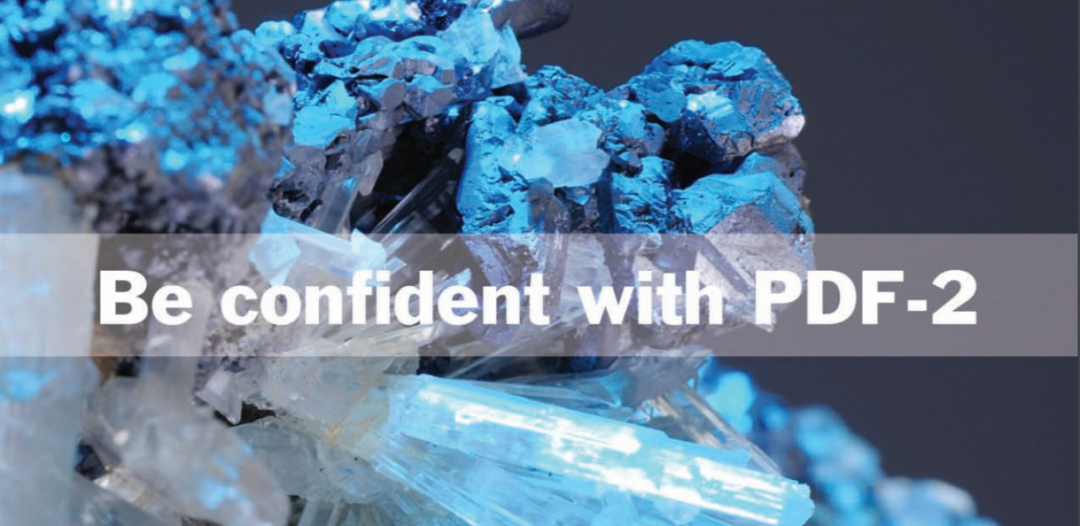
Search method
The PDF-2 database supports over 60 types of phase search methods, such as research fields, data sources, data quality, periodic tables, spatial groups, crystallographic parameters, compound names, diffraction data, physical properties of materials, and references, providing convenience for users to quickly and accurately search and identify phases.
1. Research field, data source, data quality, periodic table of elements
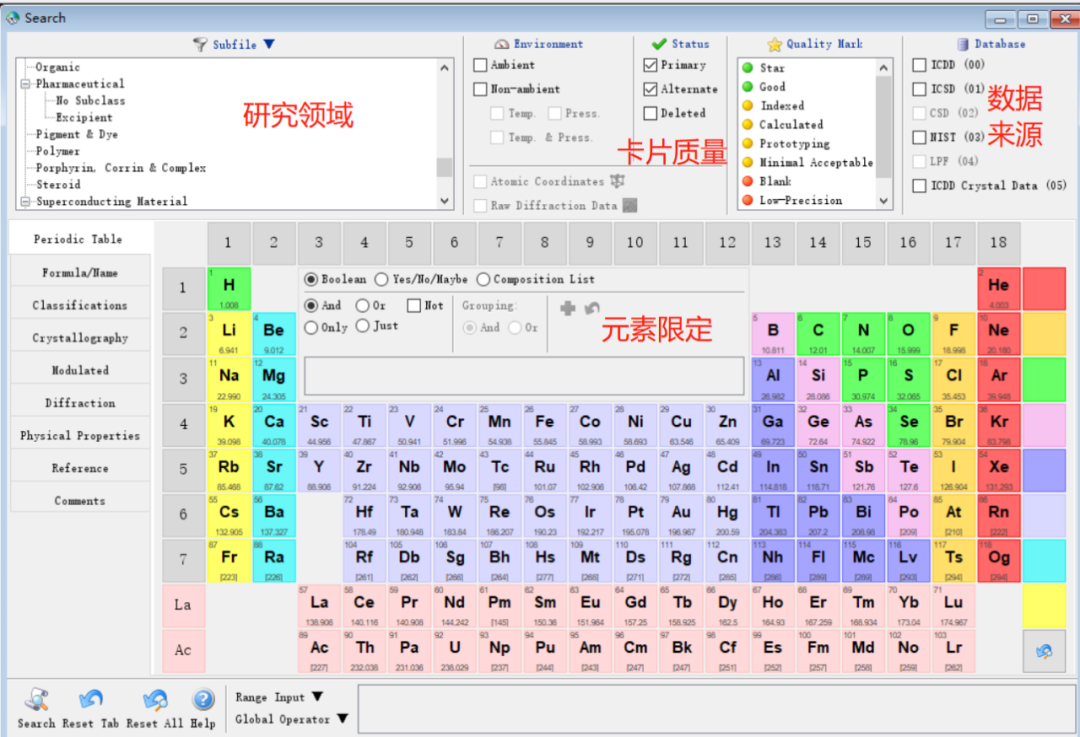
2. Chemical formula related search
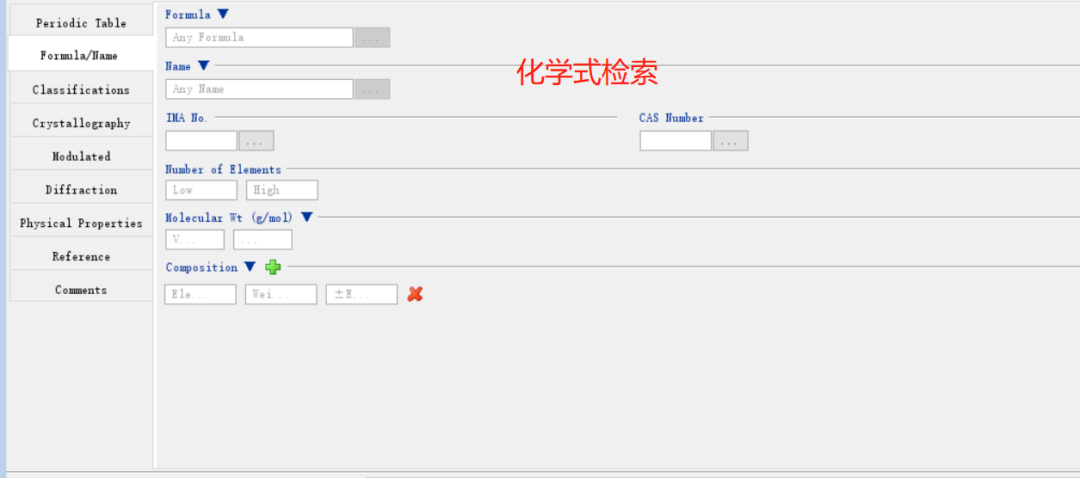
3. Search by category and functional group
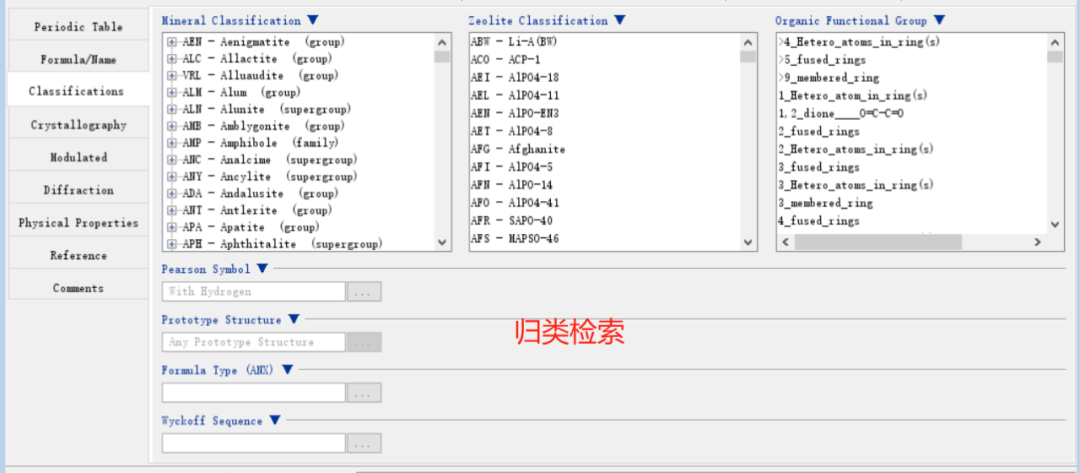
4. crystallographic parameters and spatial group retrieval
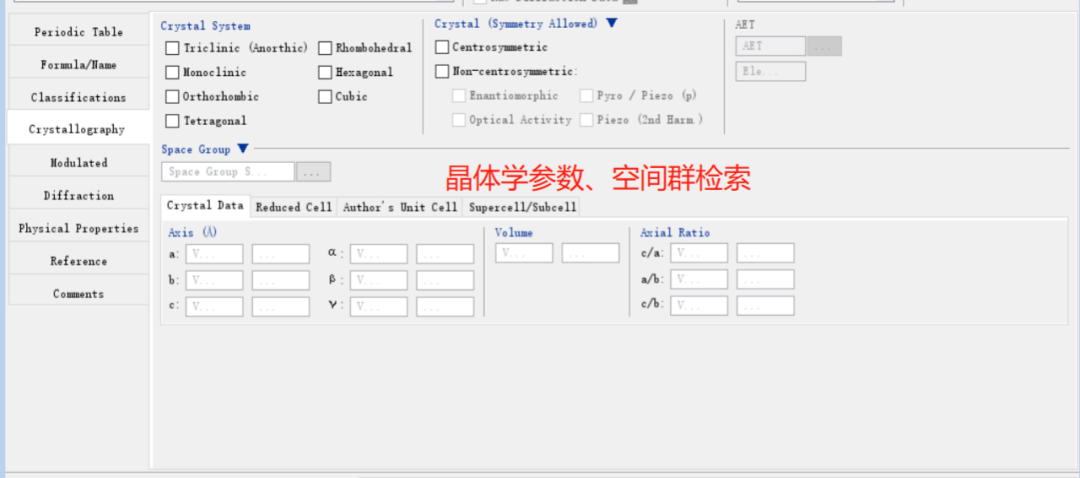
5. Diffraction data retrieval

6. Reference search
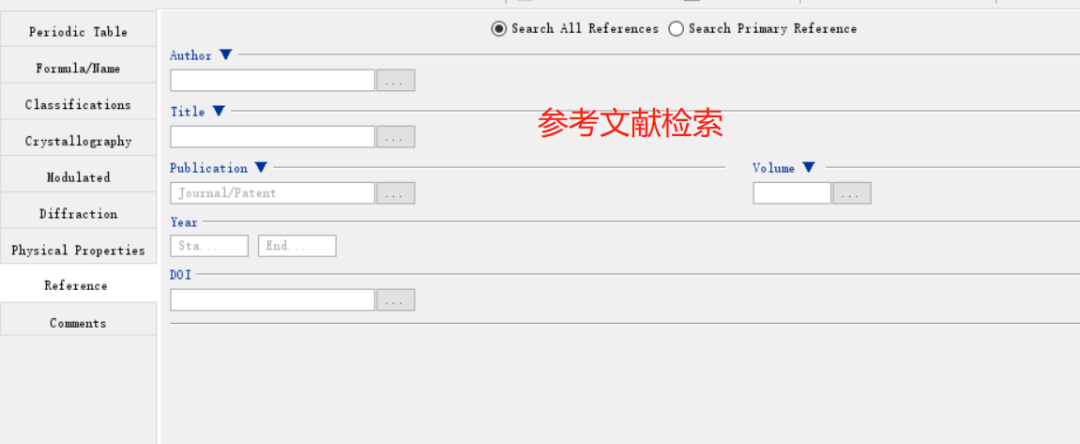
7. PDF card number retrieval
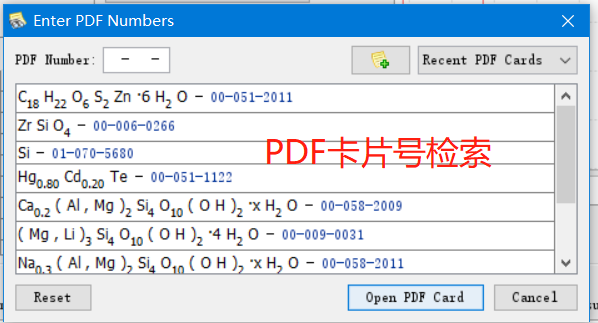
PDF-2Standard diffraction cardConventional phase information
1. PDF card number
Each PDF card has its own number, and each PDF card number corresponds to an object. The PDF card number consists of three sets of data and nine digits, XX-XX-XXXX. For example, the PDF card number for cubic Si is 01-070-5680, where 01 represents the data source. The structural data of the card comes from the ICSD database, 070 represents the 70th volume included, and 5680 represents the corresponding number of the PDF card.
2. Diffraction wavelength
In PDF-2, users can choose X-ray diffraction targets such as Cu, Fe, Mo, Co, Cr, Mn, Ag, and user-defined wavelengths. When collecting PDF cards, the X-ray light source used is Cu target K α The wavelength corresponding to 1.
3. Diffraction data, relative intensity of diffraction peaks, d-I - (hkl) list
The peak intensity in the PDF card is normalized to 1000, and all other diffraction intensities are relative diffraction intensities; The spacing between crystal planes corresponding to the three strong lines is in bold font.
In the PDF-2 card, the diffraction intensity is divided into two types: fixed slit intensity and variable slit intensity;
If the suffix of the relative intensity I value has m, it indicates that the relative diffraction intensity of other crystal plane diffraction peaks is equal to the relative diffraction intensity of that crystal plane diffraction peak.
Taking Si as an example, the information on its PDF card is as follows:
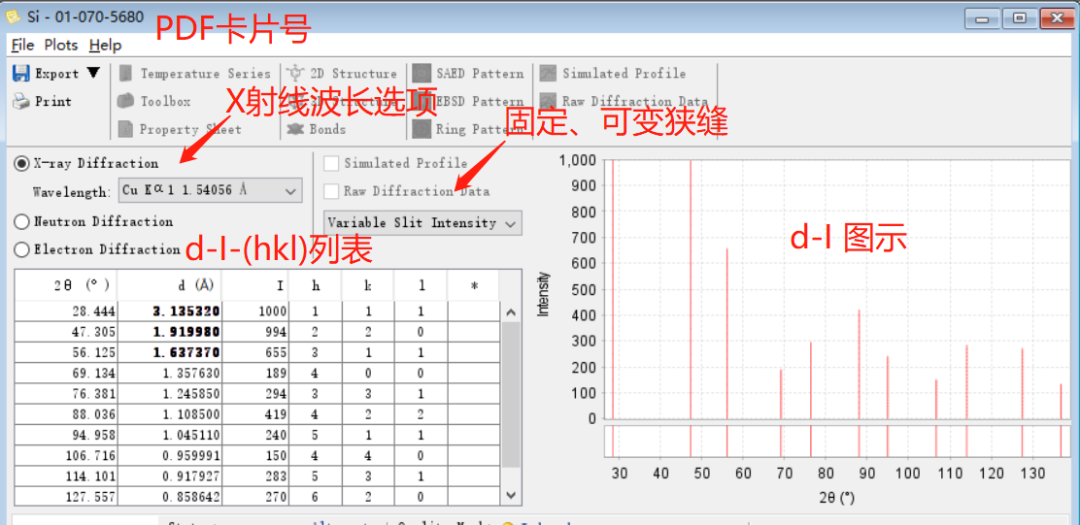
4. Basic information of phases in PDF cards
The basic information of the physical phase in the PDF card mainly includes the following points:
1. Status of PDF Card, divided into three types: Primary, Alternative, and Delete;
Primary- Usually indicates that the data quality included in PDF cards is relatively good, and it is diffraction data at room temperature;
AlternativeOne PDF card among many PDF cards of a certain material does not necessarily indicate poor quality of the included PDF card;
DeletedThe PDF card has an unresolved error and has been deleted from the current PDF database. But the card can still be retrieved, making it convenient for users to refer to the data. In general, PDF cards marked as "deleted" will have better quality PDF cards instead of "deleted" PDF cards.
2. Quality Mark for PDF CardsThe PDF cards published by ICDD are the world's first to label the quality of all collected data, and each PDF card is reviewed, edited, and standardized by different levels of editing. If there should be multiple PDF cards for the same object, it is generally recommended to choose a card with a higher quality marking level for use.Quality MarkFor the specific definition of each quality mark in, please pay attention to other professional articles of the official account.
3. The temperature and pressure at which the card was collected. It is worth noting that in the process of phase identification, it is necessary to choose a temperature and pressure that is consistent with the experiment. Otherwise, the structure of the phase identification may be incorrect.
4. The chemical formula, structural formula, atomic ratio, atomic weight ratio, common English name, mineral name, IMA number, CAS number, inclusion time, etc. of the phase.
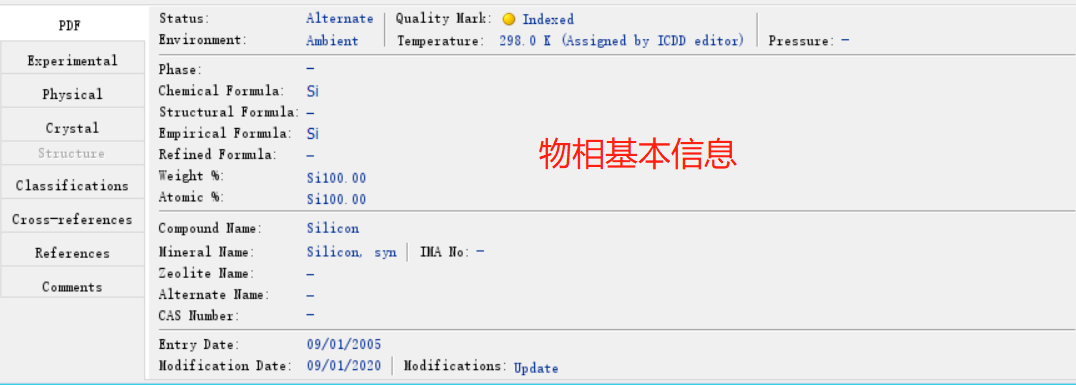
5. Experimental conditions used when collecting PDF cards
This mainly includes information such as X-ray wavelength, filter, camera radius, internal standard, d-value, intensity, etc.
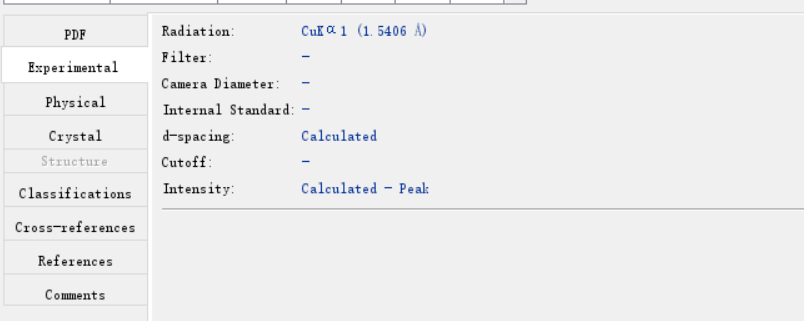
6. Crystallographic data such as spatial groups, cell parameters, and physical properties corresponding to physical phases (Physical, Crystal)
This mainly includes information such as crystal system, spatial group, cell parameters, cell volume, number of chemical formula units Z, density, F factor, reference strength RIR value I/Ic, R factor, etc.
In general, if the F factor is greater than 15, it is considered that the XRD pattern of the phase is more reliable.
2. The reference intensity I/Ic is the integral intensity ratio of the peak intensity between the tested compound and the standard corundum when the weight of the tested compound and the standard corundum is 1:1. The wavelength of X-rays affects the I/Ic value, and most PDF cards are collected using a Cu K X-ray source α 1 (1.5406 A). If other wavelength X-ray sources are used in the experiment, special attention should be paid to the wavelength used to collect the PDF card when analyzing the relative content of the phase. At this time, the I/Ic value in the PDF card may no longer have reference value. If the PDF card corresponds to structural data, JADE standard or JADE Pro software can be used to theoretically calculate the specific values of the I/Ic of the phase at different wavelengths.
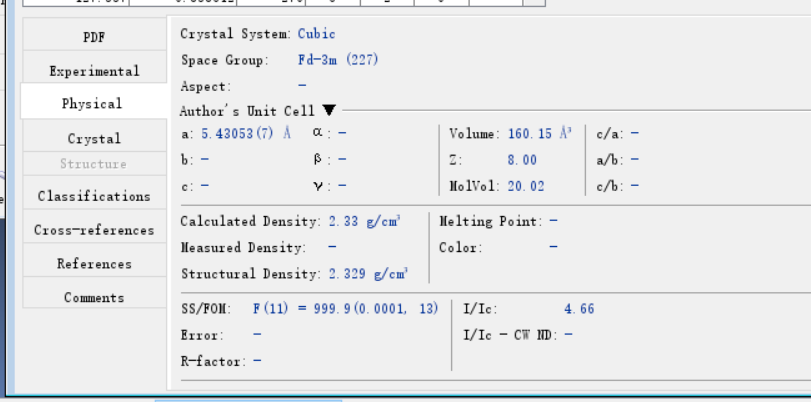
7. Classifications corresponding to objects
This mainly includes information such as sub domains, ore classification, crystal structure prototypes, etc.
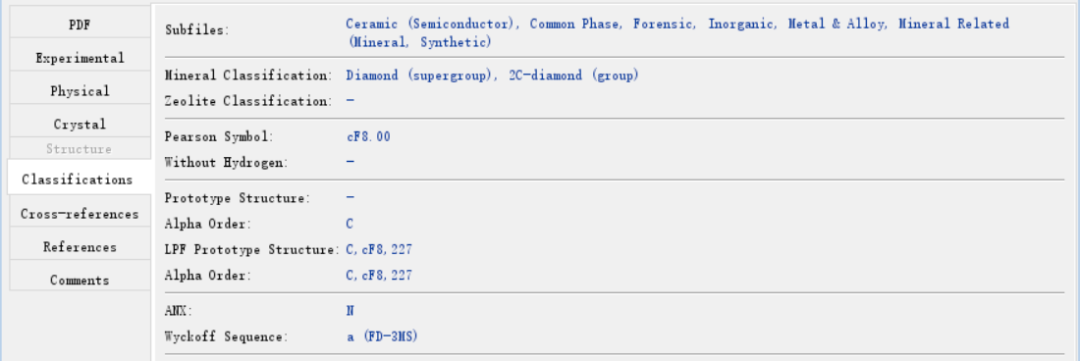
8. Cross Reference Similar PDF Cards
Display a series of basic information about PDF cards that can be cross referenced with the current PDF card, and indicate the status of the cross referenced PDF card (Primary, Alternative, or Delete) or the diffraction pattern of the cross referenced PDF card that has a "correlation" with the current PDF card. "Correlation" refers to the two having the same spatial group and molecular formula, and their stoichiometry may vary slightly.
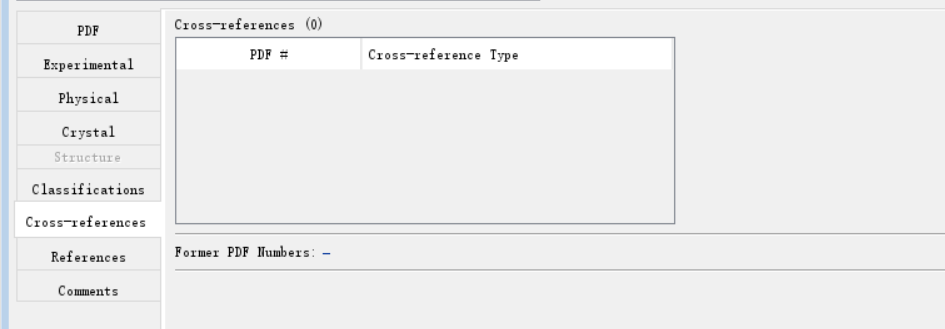
9. References
Mainly displays the literature information referenced by the current PDF card, and the number of references varies for different PDF cards.

10. Edit comments
The main display is the comment on the current PDF card, which comes from the contributor or ICDD editor of the card. It generally includes basic information such as sample synthesis method, diffraction inclusion conditions, etc. If the quality of the current PDF card is poor, the editor will also indicate the reason. Many people often overlook this information when using PDF cards. In many cases, the editing comments section of PDF cards contains key information about the object, which can effectively help users make secondary judgments in object retrieval.

PDF-2 2024The authorization period for the database is 5 years, and the phase search software SIeve is provided as a gift. The diffraction data of the experiment can be directly imported into SIeve. This software supports all formats of diffraction data, which can help you quickly and accurately identify phases.
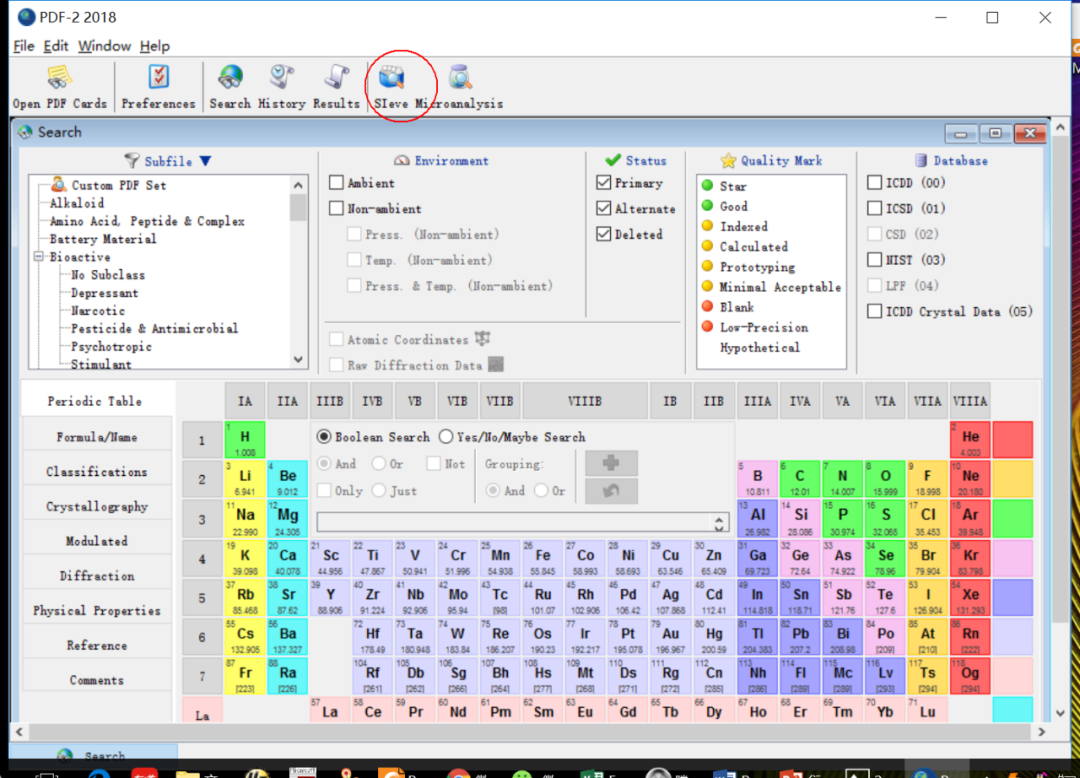
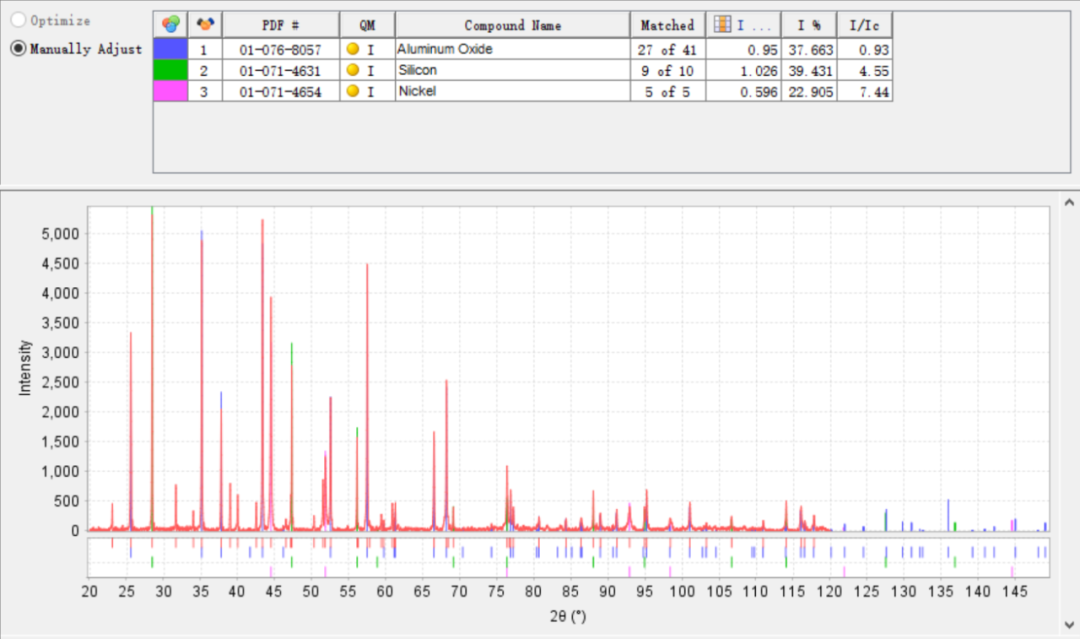
The PDF-2 2024 database can also be directly imported into other commonly used search software, such as JADE, EVA, Highscore, etc., achieving true seamless connection and providing necessary assistance for your scientific research!





















